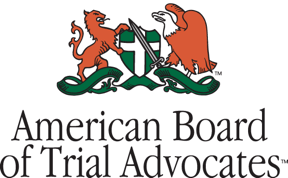The landscape of coastal real estate development in North Carolina has undergone a seismic shift following major regulatory changes over the last few years.
For developers eyeing coastal properties, understanding the recent evolution of wetlands regulation is crucial for project planning and risk assessment.
This guide explores how the transformed regulatory framework affects coastal development projects and provides strategies for successful navigation of the current environment.
The Path to Today's Regulatory Framework
The current regulatory landscape emerged through significant changes in 2023, followed by a year of practical implementation and adjustment in 2024. Early 2023 marked the first major shift when the United States Environmental Protection Agency (EPA) and Army Corps of Engineers (Corps) implemented a revised definition of "Waters of the United States" (WOTUS), the fifth iteration in eight years, aiming to clarify which water resources qualify for federal protection under the Clean Water Act (Act). Some states challenged the 2023 WOTUS Rule, resulting in nearly half the states remaining under the pre-2015 regulatory regime. North Carolina is the sole state in the southeast in which the 2023 WOTUS Rule is applied.
In May 2023, the landscape changed dramatically when the United States Supreme Court released its Sackett v. EPA decision. This ruling altered the interpretation of Clean Water Act federal protection of wetlands, limiting it to only those "wetlands with a continuous surface connection to bodies that are 'waters of the United States' in their own right," such that they are "indistinguishable" from those waters. While federal regulatory oversight of wetlands has fluctuated for over two decades, the Sackett decision represents what many consider the most significant shift in the Clean Water Act's history. By September 2023, the EPA and Corps issued a conforming rule to align the 2023 WOTUS Rule with Sackett.
Meanwhile, in North Carolina the General Assembly overrode a gubernatorial veto to pass Senate Bill 582, "An Act to Make Various Changes to the Agricultural and Wastewater Laws of the State" (the 2023 NC Farm Act). The 2023 NC Farm Act restricts the state definition of "wetlands" to those "that are waters of the United States as defined by 33 C.F.R. § 328.3 and 40 C.F.R. § 230.3," i.e., only those protected by the Act and regulated by the EPA and Corps. This definition of "wetlands" is effective until the Environmental Management Commission (EMC), which directs and creates rules for several divisions under the North Carolina Department of Environmental Quality (NCDEQ), formally adopts a permanent rule to amend the existing definition of wetlands. Until then, wetlands in North Carolina are only those the federal government recognizes and protects as WOTUS, unless a state statute, such as the Coastal Area Management Act (CAMA), specifically provides otherwise.
Implementation Realities in 2024
The past year revealed several key implementation patterns and challenges in North Carolina. The Wilmington District office of the Corps has developed specific regional guidance for coastal areas, particularly focusing on the unique characteristics of North Carolina's coastal plain wetlands and referring complex jurisdictional calls to EPA headquarters, particularly where drawing a line where a WOTUS ends and an adjacent wetland begins to establish the "continuous surface connection" proves difficult.
Implementation also highlighted practical challenges in the field. Environmental consultants report that determining what constitutes "indistinguishable" wetlands has proven complex, particularly in areas with seasonal hydrologic connections or where discrete features create artificial separations between wetlands and navigable waters. The permitting process evolved to include more detailed documentation requirements for wetland delineations, often requiring multiple site visits during different seasons to establish or rule out continuous surface connections.
More Changes in 2025
Three months into 2025, shifts in implementation continue. On March 12, 2025, the EPA, now led by Administrator Lee Zeldin of the second Trump Administration, issued a joint memorandum with the Corps providing new guidance to clarify the implementation of the Act and application of "continuous surface connection" to adjacent wetlands consistent with Sackett. The memorandum sets out a two-part process to determine whether adjacent wetlands are regulated WOTUS and protected under the Act. First, the wetland must be directly adjacent to or abutting a body of water that is a WOTUS in its own right (generally a traditional navigable water or a relatively permanent body of water connected to a traditional navigable water). Second, the wetland must have its own continuous surface connection to the covered water making it difficult to determine where the water ends and wetland begins.
Under the guidance, discrete features, such as non-jurisdictional ditches, manmade or natural swales, berms, pipes, culverts, etc., cannot create the continuous surface connection between the WOTUS and adjacent wetland to trigger federal protection. Wetlands that are physically separated from a jurisdictional water by a discrete feature will not be considered a jurisdictional WOTUS under the Act. As a result, certain guidance and training materials that assumed a discrete feature established a continuous surface connection have been rescinded. The agencies plan to utilize public notice and stakeholder engagement opportunities and to address implementation challenges and may issue additional guidance or rulemaking.
On March 13, 2025, separately and without discussion of the new federal WOTUS guidance, the EMC voted to send to public notice and hearing its proposed amendment to "clarify the definition of wetlands" in the state's administrative code in accordance with the 2023 Farm Act by inserting into the definition of wetlands a sentence that aligns the state's definition of wetlands to the federal definition. The public comment period and subsequent rules review process will continue into 2026, although the NCDEQ has been implementing the definition since 2023 as directed by the General Assembly.
Impact on Coastal Development Projects
The evolution of the "continuous surface connection" standard will transform how wetlands are evaluated in coastal areas. Previously, many wetlands received federal protection due to their ecological connection to nearby waters, even without a visible surface connection. Now, the analysis will focus on observable surface connections unbroken by non-jurisdictional discrete features. For instance, a wetland separated from a tidal creek by a man-made berm may no longer qualify for federal protection, even if it floods during high tides.
While some wetlands may no longer fall under federal jurisdiction, developers must still consider jurisdictional issues raised by state and local regulations. The NCDEQ Division of Coastal Management maintains oversight of development activities in areas of environmental concern that contain estuarine waters and coastal wetlands through CAMA. This means that while federal permitting requirements might be reduced in the 20 coastal counties, state-level scrutiny could increase.
Of particular importance for coastal developers is regulation of specific coastal wetland species under CAMA. The state specifically protects wetlands containing any of ten plant species listed in the administrative code, including salt marsh cordgrass, black needlerush, sea lavender, bulrush, and cattail. Any of these species in a coastal wetland triggers CAMA jurisdiction, regardless of federal wetland status under the post-Sackett framework. This means that even if a wetland loses federal protection due to lack of a continuous surface connection, these species will maintain state-level regulatory oversight and require CAMA permitting.
The NCDEQ Division of Water Resources protects vegetative buffers along streams and rivers, which often include wetlands, in river basins like the Neuse and Tar-Pamlico and the Jordan Lake watershed. Development impacts to the first 50 feet from the high-water line are highly regulated. It also oversees permitting and compliance with state surface water quality standards that can include projects that impact wetlands. And at the local level, governments may have additional zoning regulations, floodplain ordinances, or conservation measures that affect development activities on or near wetlands.
Practical Strategies for Coastal Developers
Before purchasing coastal property, developers should conduct thorough due diligence, including a preliminary survey of wetlands under the new guidance, assessment of potential state and local regulations, evaluation of historical wetlands documentation, and analysis of potential mitigation requirements and costs. Site analysis by trained wetlands professionals continues to be highly recommended.
When designing coastal projects, developers should consider incorporating features that address both current requirements and the potential effects of fewer regulatory protections for wetlands. This includes stormwater management systems that account for current permit requirements and the potential future increase in runoff volume from development footprints with reduced wetlands available to counteract nuisance flooding from increasing rain events and storm surges, regardless of jurisdictional status. Risk management strategies should account for the effects of increased development eliminating wetlands that will result in increased flooding to the surrounding area during hurricanes and other storms. Voluntary protection measures can be a part of the development strategy for long term success and risk mitigation after the project is complete.
Conclusion
The transformed regulatory landscape for wetlands presents both opportunities and challenges for coastal development in North Carolina. Success requires understanding the current requirements and anticipating changes in state and local regulations. The implementation experiences of 2024 have demonstrated the need for flexibility and comprehensive planning in approaching coastal development projects.
Developers who adopt a proactive approach to wetlands, considering both immediate requirements and potential effects of future regulations, will be best positioned for success. Working closely with environmental consultants, legal counsel, and regulatory agencies, particularly remains essential for navigating this complex landscape. Evolving regulatory interpretations signal that adaptability and forward-thinking planning will continue to be essential components of successful coastal development strategies.









